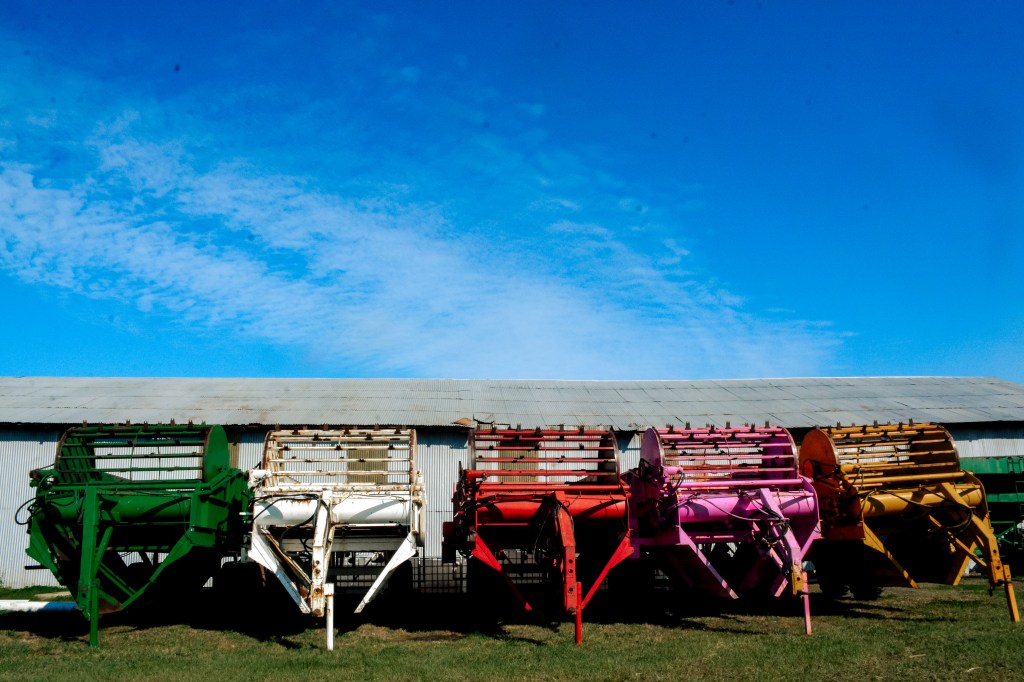A Day in the Life of a Sugar Cane Family
Published 3:00 pm Monday, August 22, 2022

- 77-736.jpg
It’s 7 p.m. in early December, and Lane Blanchard is just getting in from a long day in the cane fields. Like other growers, he has been cutting his cane since the first week of October. With grinding season nearly finished now, he and his crew at Lane Blanchard Farms in Loreauville will be working nonstop until the middle of January. It’s a life he and his wife Kristie, who is also an integral part of the business, have been at since 1983. Now with two grown sons helping, the Blanchard’s are an example of the family spirit and work ethic that bring success and longevity to the sugarcane industry.
Lane, unflinching and humble to his core, is a fifth-generation farmer with a strong vein of sugarcane history running through both sides of his family. He oversees 1,700 acres of his own in Iberia and St. Mary Parishes, and also helps manage 3,800 acres of Blanchard Brothers, Inc. with his two brothers.
Trending
Kristie has been the business’s secretary, doing payroll and the books, since before they were married. She’s always known how much her husband loves farming, but says it was easier back then. “Lane was only farming 300 acres at the time and, as the years went on, the acreage grew.” (She oversees the payroll for Blanchard Brothers, as well, although she is in the process of handing that duty over to a sister-in- law.)
Mornings
The day begins early on the Blanchard farm. Lane wakes up with the roosters, rising at 4:00am. By 4:30 he’s on his way to his routine first stop, a small community store and bait shop in Lydia called Dago’s. There he and 10 other farmers talk shop for a short time over biscuits and coffee. They swap “hellos” with the fishermen who come in to pick up some bait. It’s a grounding 20 minutes he wouldn’t miss before heading out to any one of his fields, which span from Loreauville to Cypremort Point and Glencoe.
A harvest schedule tells the crew which fields to tend to first, depending on the year, soil type and weather. The sugarcane crops are on a three-year cycle, cutting the older cane first and then moving into younger cane fields, all the while with two harvest operations going on.
During grinding, Lane will spend 9-10 hours a day cutting cane, himself, something he doesn’t consider a chore.
“Sitting on top of that harvester, cutting the cane, I can say I saw the crop from start to finish,” he says in earnest. “To watch the cane go through the harvester, that’s the fruits of your labor.”
Trending
His operation and Blanchard Brothers have four tractors and four trucks each, loading the cane in the fields, bringing it to the loading site, and hauling it to the St. Mary Sugar Co-Op Mill. It’s a continuous operation all day long, with workers communicating by two-way radios. Between the two operations, a total of some 1,600 tons of cane (or about 65 truckloads) is hauled each day.
Afternoons
Lunch for farmers is not a break, as we know it to be. The men – Lane included – eat a sandwich on the go, at no set time, anytime from 10 to 1, depending on when they have a few minutes’ wait time.
They are fortunate to have had only a few breakdowns beyond an occasional flat tire or a busted hydraulic hose. “We have spare tractors and a spare harvester; if one breaks, we replace it and continue going,” Lane assures. Parts are carried with them, and two mechanics are also on hand at the call over a radio. Time is money in the sugarcane business.
After the cane is hauled away, the remaining shucks are either burned or raked. “When a field is near a school or homes, we opt not to burn, but we still have to get the residue off the tops of the cane. So in those cases, we rake the shucks off the top of the rows with hay racks attached to the tractors,” explains Lane, who also takes great steps to learn how to preserve the land for future generations.
Once a crop has been harvested, his sons (who have worked on the farm since they were 12) “bust out” stubble on the land to be replanted. Rutted fields are flattened and then surveyed for precision grating to help drainage. They essentially design the fields to where they want the water to drain, then download the information onto the tractor. A satellite that reads the elevation directs the dirt buckets how to grade the land.
“The technology that has come through is amazing to me,” Lane marvels. “Back in the day, we used to cut cane with a whole stalk harvester. It’s a more efficient operation now.”
When the quota is met, the day is done. Field maps help Blanchard keep track of his yields, but also, for the past two years, they have rented a cutting edge, two-row combine harvester from John Deere with a monitor system on it that provides the yield information.
Kristie, who is also the Registrar of Voters for Iberia Parish, knows well the commitment of being the wife of a sugarcane farmer. “It’s a challenging life,” she explains. “You have to be willing to do a lot on your own. Lane loves what he does, but is always working. In addition to the book work, I cut the grass, tend to the flowerbeds… put salt in the water softeners. During the busy seasons, I talk to him briefly when he wakes up and then about an hour and a half at night.” For several years every Sunday, she brought lunch and three ice chests of soft drinks for him and 22 others in the fields during grinding. “I took one year off, when I was having back problems,” she adds.
At the end of a harvesting day, workers service the farm equipment, fueling up the machines, cleaning the windshields, blowing the air filters and the accumulation of shucks off the combine, preventing a potential fire. “Not all farmers take the time to do this after a hard day’s work,” Kristie points out.
Evenings
When Lane gets to the house for the evening, he heads straight to the candy or cookie jar for a long-awaited treat. “I might go in the office and do a little paperwork,” he says matter-of-factly. He hits the shower before eating supper. Watching television doesn’t usually last long before his eyes are closing, but he does enjoy watching what he can of LPB, RFD-TV, an agribusiness and rural lifestyle channel, or a taping of Yellowstone before going to bed between 7:30 and 8:00.
Like most sugarcane farmers, the Blanchards are a family dedicated to the industry. Kristie and Lane are board members of the Teche Growers Association, a non-profit dedicated to the education, preservation and promotion of the farming and agriculture industry in South Central Louisiana. Lane is also a member of the board, and vice president of the St. Mary Sugar Co-op.
In an entire year, Lane is off at the end of January and February and some of July. During planting and grinding, he and his crew work 12 to 141⁄2-hour days, seven days a week, as required by the mill. His crops are at the mercy of the weather, pests, weeds and diseases, and maintenance – and equipment costs are ongoing.
So why does he do it? “As a kid I hated school and sports, but was always intrigued with agriculture,” he says. “The most rewarding thing is seeing the stages of farming, and every season has its rewards where you can see the progress of your hard work throughout the year.”



